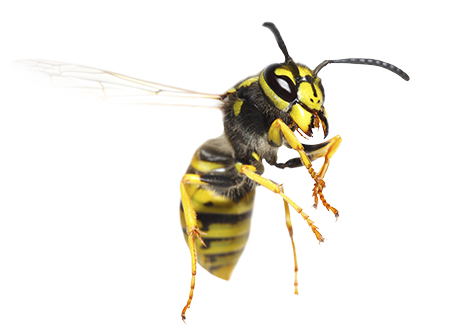Not All Stinging Insects Sting!
Tuesday, September 17, 2019
Did you know?
- Only female bees and wasps are actually capable of stinging.
- A majority of stinging insects live their lives without ever stinging. Some species can’t sting.
- Most only sting in self-defense - when physically touched or when their nests are threatened.
- There is no evidence that brightly colored clothing and perfume attracts bees and wasps.

As families across the midwest continue to squeeze every last drop of The Great Outdoors from Summer before shifting their sights to Mother Nature’s Fall delights, Rose Pest Solutions - offers these insights on bees and wasps to help keep the sting out of the waning warm weather.
- This is a good time of the year to walk around and check your property for hives and nests built by stinging insects. Pay attention to overhangs, eaves, and under porches and decks, as well as shrubs, trees and other structures on your property.
- The most common variety of stinging insects that homeowners are likely to find this time of year include:
- Bald-Faced Hornets and Yellow Jackets that build basketball-sized nests covered in paper. They generally select dense trees or shrubs, building eaves, wall voids, or pre-existing holes in the ground as suitable nest sites.
- Mud Daubers create short, tubular-looking nests out of mud in protected spots in attics, under eaves, and other outdoor ceilings and structures.
- Paper Wasps construct umbrella-shaped nests from paper-like materials, generally hanging under eaves, on fences, and hollow handrails.
- Grass Carrying Wasps build small nests around window frames or other small voids such as hollow deck furniture using, as their name implies, grass.
- One of the most common stinging threats to humans is drinking sugary beverages that are highly attractive to Yellow Jackets. Serious mouth and throat stings can result when drinking from cans in which wasps are hidden.
- If you do find a nest, don’t try to remove it by yourself as stinging insects may attack when annoyed or threatened.
Not all stinging insects pose a threat to humans. While some are more aggressive than others, many are actually beneficial predators and pollinators.
“People’s fear of bees and wasps is actually ironic since they are pollinators and provide great benefit to our environment as they travel from flower to flower,” said Dale Hodgson, regional technical director for Rose Pest Solutions.
According to the Pollinator Partnership, 75 to 95 percent of all flowering plants need help with pollination. Pollinators are key to transferring pollen within healthy and productive agricultural ecosystems.
“With some awareness of the surroundings, humans can avoid stings and peacefully co-exist with pollinators in outdoor settings.”
When bees and wasps threaten more than recreational enjoyment by taking up residence in and around the home, Rose technicians are trained to remove nests and hives safely, using the most effective solutions.
Back To Blog
